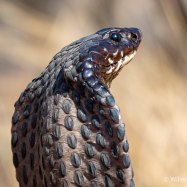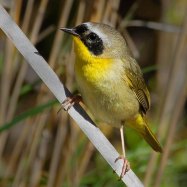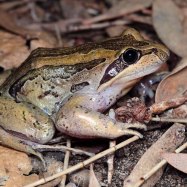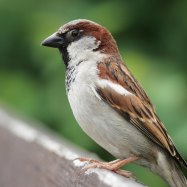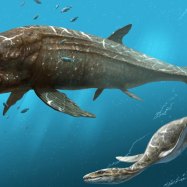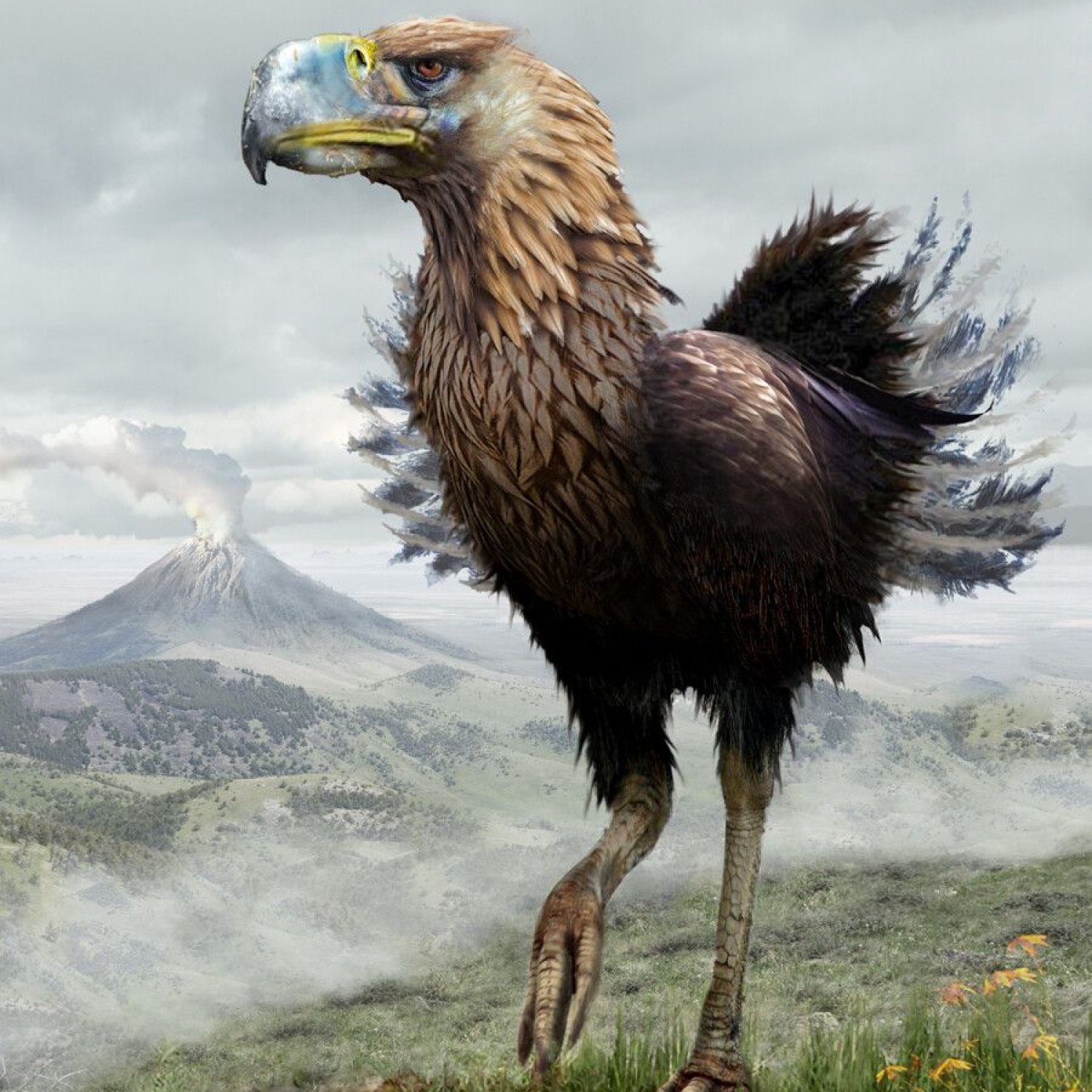
Terror Bird
Approximately 2.5 to 3.5 meters
Terror birds, part of the Phorusrhacidae family, were large, flightless birds with a long neck and large head. Fossils have been found in Argentina, Brazil, Chile, and Uruguay, measuring approximately 2.5 to 3.5 meters. These powerful creatures are a fascinating glimpse into the ancient world. #TerrorBirds #Phorusrhacidae #FossilDiscoveries
Animal Details Summary:
Common Name: Terror Bird
Kingdom: Animalia
Habitat: Grasslands, forests, and wetlands
The Mighty Terror Bird: A Giant of the Prehistoric World
As kids, we were fascinated by the existence of enormous, prehistoric creatures like dinosaurs and mammoths. Some of us even dreamt of being able to walk among them, to witness their sheer size and power. While we may never have the chance to see a T-Rex in person, there is one ancient animal that we can encounter through fossils and imagination - the Terror Bird.Also known as Phorusrhacos longissimus, the Terror Bird was a massive avian predator that roamed the grasslands, forests, and wetlands of South America millions of years ago Terror Bird. Its scientific name translates to "longest-bones bearer," referencing its long and powerful legs. Its common name, Terror Bird, couldn't be more fitting, as this giant bird was a formidable predator, standing at over three meters tall and weighing up to 300 kilograms.
Let's take a closer look at this fascinating creature and discover why it was a true terror of the ancient world.
Evolution and Classification
The Terror Bird belonged to the animal kingdom Animalia and the phylum Chordata. Its class was Aves, placing it in the same group as modern-day birds. However, its order, Cariamiformes, and family, Phorusrhacidae, were exclusive to the extinct birds known as Phorusrhacids, or terror birds.These birds evolved from smaller, flying birds and were the largest predators in South America for millions of years. Scientists believe that they evolved around 60 million years ago and went extinct around 2.5 million years ago Torkie. This puts the Terror Bird in the same time frame as other giant animals like the giant sloth and saber-toothed cats.
Habitat and Distribution
The Terror Bird was widespread in its time, with fossils found in various countries in South America, including Argentina, Brazil, Chile, and Uruguay. This indicates that they had a wide geographical distribution, making them one of the most successful predators of their era.These birds were well-adapted to diverse habitats, including grasslands, forests, and wetlands. They were also known to be semi-aquatic, able to wade in shallow waters in search of prey. Their flexible habitat preferences gave them an advantage in terms of survival and allowed them to thrive in different environments.
Feeding Method and Prey
As with most apex predators, the Terror Bird was a fierce carnivore, relying on hunting for its food. Its strong, hooked beak was its primary weapon, capable of tearing through flesh and bone with ease.But, unlike modern-day predators that hunt in packs, the Terror Bird was a solitary hunter. Its size and speed allowed it to hunt down prey on its own without the need for a pack. It would silently stalk its prey, ambush them by surprise, and deliver a quick and lethal strike with its powerful beak.
So, what kind of prey did the Terror Bird go after? These birds had a varied diet, ranging from small mammals and reptiles to other birds and even large prey like horses and other plant-eating mammals. Its prey preference depended on its size, with larger species going after larger prey.
Appearance and Adaptations
The Terror Bird's most striking feature was its size. It stood at over three meters tall, towering over most other animals of its time. With its long, powerful legs, it could run at speeds of up to 50 kilometers per hour, making it one of the fastest predators in its environment.Another unique adaptation of the Terror Bird was its beak. It had a large, hooked beak, similar to that of a vulture, but much more powerful. This beak was used to pierce and crush its prey, and its powerful neck muscles allowed it to generate enough force to deliver a lethal blow.
Its long and flexible neck also gave the Terror Bird an advantage in hunting. It could maneuver its head in different directions, allowing it to scan its surroundings for potential prey without moving its entire body. This made it more efficient at hunting and gave it the element of surprise in its attacks.
Coloration and Sexual Dimorphism
While we can only imagine the exact color patterns of the Terror Bird based on fossil evidence, there is evidence of sexual dimorphism in their coloration. This means that the males and females had different color patterns, likely used as a form of courtship or display.Some fossils show evidence of black, gray, brown, and white feathers, indicating that the Terror Bird may have had a mottled or speckled color pattern. This could have helped them blend into their environment when hunting or helped attract mates.
Life and Extinction
The Terror Bird's life span is estimated to be around 15 to 20 years. Unlike modern-day birds, they did not have the advantage of flight, which may have contributed to their relatively short life span.Unfortunately, like many other large animals of the prehistoric world, the Terror Bird went extinct. Scientists are still uncertain about the exact cause of their extinction, but it is believed to be a combination of factors such as climate change, competition with other predators, and changes in their habitat.
The Legacy of the Terror Bird
The Terror Bird may have gone extinct, but its legacy still lives on today. Fossils and evidence of their existence continue to fascinate scientists and paleontologists, giving us valuable insights into the ancient world and how different species adapted and evolved over time.As apex predators, the Terror Bird played a significant role in regulating the populations of their prey. Their absence may have had a significant impact on the ecosystem of South America, leading to changes in the food chain and the environment.
Conclusion
The Terror Bird was a true giant of the prehistoric world, dominating the landscapes of South America for millions of years. Its massive size, unique adaptations, and hunting techniques made it a formidable predator that struck terror in the hearts of its prey.While we may never have the chance to see a Terror Bird in person, their fossils and evidence of their existence continue to capture our imagination and give us a glimpse into the incredible diversity of life that once roamed our planet. The legacy of the Terror Bird will live on as a reminder of the dynamic and ever-changing world we live in.

Terror Bird
Animal Details Terror Bird - Scientific Name: Phorusrhacos longissimus
- Category: Animals T
- Scientific Name: Phorusrhacos longissimus
- Common Name: Terror Bird
- Kingdom: Animalia
- Phylum: Chordata
- Class: Aves
- Order: Cariamiformes
- Family: Phorusrhacidae
- Habitat: Grasslands, forests, and wetlands
- Feeding Method: Carnivorous
- Geographical Distribution: South America
- Country of Origin: Argentina
- Location: Fossils found in Argentina, Brazil, Chile, Uruguay
- Animal Coloration: Varied, including black, gray, brown, and white
- Body Shape: Large, flightless bird with a long neck and large head
- Length: Approximately 2.5 to 3.5 meters
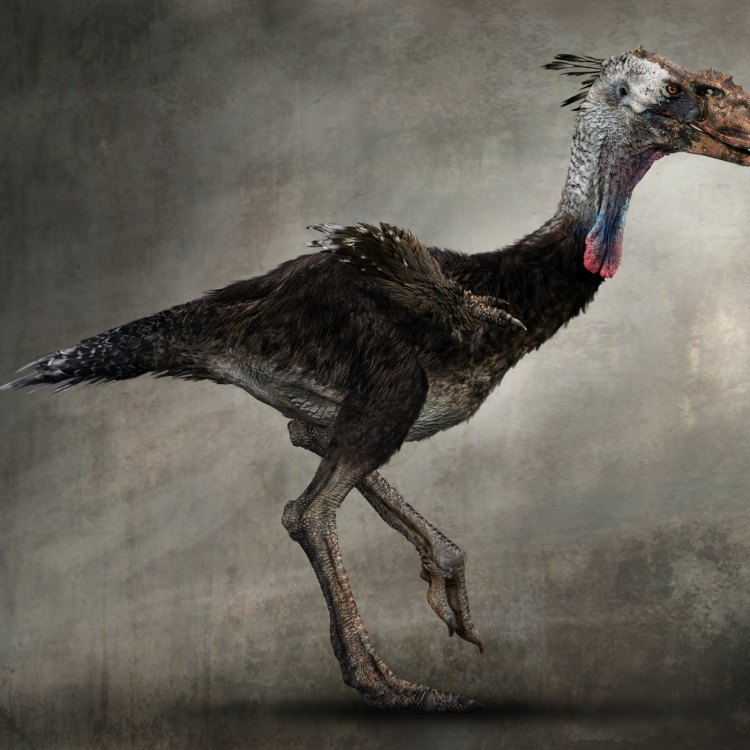
Terror Bird
- Adult Size: Very large, weighing up to 400 kg
- Average Lifespan: Unknown, estimated to be around 15-20 years
- Reproduction: Egg-laying
- Reproductive Behavior: Unknown, likely similar to other bird species
- Sound or Call: No vocalization preserved in fossil records
- Migration Pattern: Likely sedentary, with some local movements
- Social Groups: Unknown, likely lived and hunted in small groups
- Behavior: Aggressive predator, likely hunted by pursuing and kicking prey
- Threats: No longer extant, became extinct around 2 million years ago
- Conservation Status: Extinct
- Impact on Ecosystem: Unknown, likely had significant impact as top predators
- Human Use: None
- Distinctive Features: Large body size, long legs, massive beak
- Interesting Facts: Had the largest beak of any known bird species
- Predator: No known predators
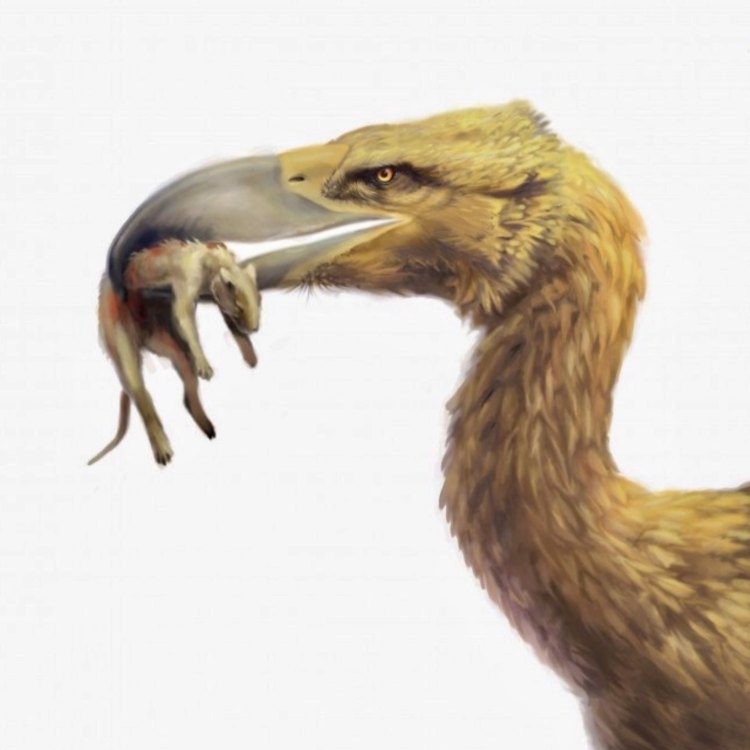
Phorusrhacos longissimus
The Majestic Terror Bird: A Formidable Predator of the Past
It was a creature straight out of a nightmare, standing at an astonishing 10 feet tall and weighing up to 400 kg. With its massive beak and long legs, it was a formidable hunter, capable of bringing down prey much larger than itself. The terror bird, also known as phorusrhacids, is an extinct species that roamed the earth during the Cenozoic era, between 62 million and 2 million years ago.Although it may sound like a creature from a science fiction movie, the terror bird was a very real and fascinating species PeaceOfAnimals.Com. In this article, we will delve into the unique features of this prehistoric predator and its impact on the ecosystem.
The Size and Appearance of the Terror Bird
The terror bird was truly a colossal creature that walked the earth. It was one of the largest birds to ever exist, with the largest species reaching an astonishing 10 feet in height. To put its immense size into perspective, it was three times taller than an ostrich, the tallest living bird today.In addition to its height, the terror bird also had an impressive weight, with the largest species weighing up to 400 kg, making it one of the heaviest birds ever recorded. This massive size was possible due to the terror bird's unique skeletal structure, with powerful legs and a massive head and beak.
The terror bird had a distinctive appearance, with long, slender legs adapted for running, a short tail, and a large beak. Its beak was its most striking feature, measuring up to 60 cm in length, making it the largest beak among all known bird species. Its beak was also hooked and sharp, allowing it to easily impale and kill its prey Turtles.
Reproduction and Behavioral Patterns
Despite its giant size, the reproduction and behavioral patterns of the terror bird remain shrouded in mystery. Based on its physical structure and the fact that it is a member of the avian family, it is believed that the terror bird laid eggs, just like any other bird species.As for its behavior, it is speculated that the terror bird was an aggressive predator, using its immense size and sharp beak to dominate and hunt its prey. Its hunting technique is thought to be similar to modern-day eagles, swooping down on its victim and using its beak to strike or impale it.
Extinction and Impact on the Ecosystem
Despite being one of the most dominant predators of its time, the terror bird faced extinction around 2 million years ago, during the Pleistocene epoch. The exact cause of its extinction still remains a mystery, with some theories pointing to climate change, competition for food, and the appearance of new predators.The disappearance of the terror bird had a significant impact on the ecosystem. They were top predators, controlling the population of other animals and maintaining balance in the food chain. With their extinction, there was a significant increase in the populations of their prey, such as small mammals and reptiles. This, in turn, had a ripple effect on the entire ecosystem, leading to widespread changes.
Human Use and Conservation Status
Despite their formidable size and ferocious reputation, the terror bird has not been exploited or utilized by humans in any way. Due to their extinction, they have no direct or indirect use for human activities. However, fossils of the terror bird have been discovered and studied by scientists, providing crucial insights into their anatomy and behavior.As for their conservation status, the terror bird is considered an extinct species, with no living members remaining. The last terror bird was believed to have disappeared around 2 million years ago, ending the reign of these powerful predators.
Interesting Facts About the Terror Bird
The terror bird is already a fascinating creature, but here are some interesting facts that make it even more intriguing:- The terror bird was the largest terrestrial predator during its time, dominating the ecosystems it inhabited.
- Their fossils have been found in South America, Africa, and parts of North America.
- The terror bird was flightless, relying on its powerful legs and sharp beak for survival.
- They had a sedentary lifestyle, with some species possibly making local movements in search of food.
- Despite their immense size, the terror bird was agile and could run at speeds of up to 30 mph, making it a formidable hunter.
- There is no evidence of any predators that could have hunted the terror bird, making it the top predator in its habitat.
Conclusion
The terror bird was a fearsome creature, dominating the land during the Cenozoic era. Its massive size, physical adaptations, and hunting abilities made it an apex predator, with no known threats in its environment.Today, the terror bird may no longer exist, but its remains are a testament to a fascinating and unique creature that once walked the earth. Through studying its fossils and piecing together its behavior and impact on the ecosystem, we can gain a deeper understanding of the natural world and appreciate the diverse species that have roamed our planet.
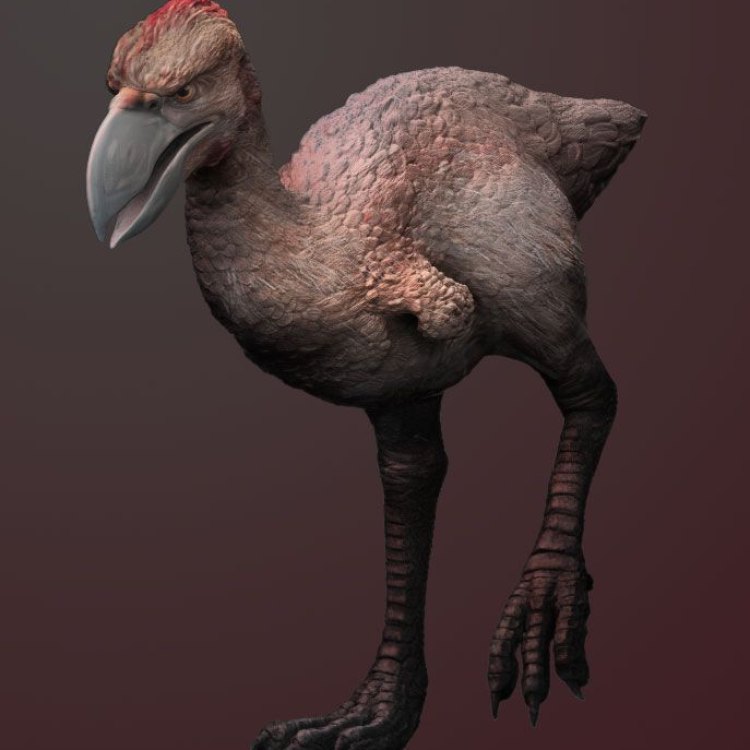
The Mighty Terror Bird: A Giant of the Prehistoric World
Disclaimer: The content provided is for informational purposes only. We cannot guarantee the accuracy of the information on this page 100%. All information provided here may change without prior notice.




